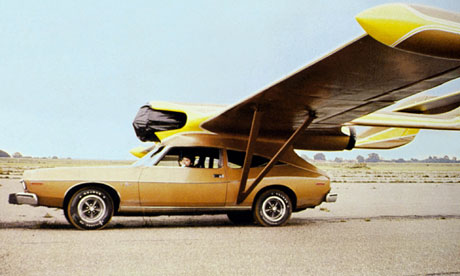
Can you imagine what your life would be like if you could avoid being stuck in traffic jams every time you go to work by car? Have you ever heard about a flying car and said to yourself – “no, it is too futuristic, maybe someday in the 4th millennium…”? If yes, then you can actually be quite surprised, because experts claim that we are very close to have our lives completely transformed by this new technology.
Many companies, such as Airbus, Uber, Google, Toyota and even a Dutch firm, Pal V, are investing big money to put this idea, which seemed unrealistic at best not a long time ago, into life. One of the players on the market is Aeromobil. Their prototype is a petrol-fueled machine that can work both in the air and on the roads. The car currently costs €1.2m and is ready to take two people on its board. The main drawback of this particular model is that it requires an airstrip to take off (Rudgard, 2017).
It might be a good question to ask ourselves, why do we sincerely need flying cars? Is it only our technical “whim”? Well, the answer was somehow already provided at the beginning of the article. Traffic congestion grows unrelentingly and our civilization tried many solutions to overcome it: expanding roads, building underground public communication systems or ride-sharing. But they still seem as not sufficient to tackle the problem. That is also why Aeromobil’s vehicle is so impractical, even if it can fly, it still requires too much space to take off and land. A flying car should be capable of VTOL – Vertical Take Off and Landing – to be convenient to use by inhabitants of the most congested areas.
Another problem with flying cars lies in the process of flying itself. Earning a pilot’s license might be too much of a bother for an average consumer, so the engineers from Airbus plan on building a self-flying machine. They already have their prototype which is going to use laser scans in order to perform the landing process (Stewart, 2017). Given the cost of the car itself, it is more plausible that the cars will be owned by the government or big taxi corporations and shared, rather than owned by individuals.
Surely, with better technical advancements, the flying cars will probably get less expensive and maybe even affordable for an average person, but some researchers worry that a consequence of it might be actually increasing congestion instead of reducing it. As an example to illustrate the reasoning can be used the fact that we are exchanging more messages now, compared to when we had only paper letters and landlines (Stone, 2017).
Additionally, what cannot be overlooked is the issue of monitoring air traffic and reducing the risk of accidents, especially for vehicles with no human interaction. The airspace itself is getting more and more “crowded” with all the planes, drones and now, possibly, flying cars too. Even more complex Air Traffic Management and Control Systems must be constructed and implemented so that safety of all parties is ensured.
Will flying cars become a great technological breakthrough of the XXIst century? Or will they rather remain a futuristic fantasy?

References:
Rudgard, O. (2017, September). Coming to a road near you: AeroMobil’s flying car preparing for take-off. The Telegraph, Retrieved from: http://www.telegraph.co.uk/news/2017/09/17/flying-car-company-aeromobil-says-radical-concept-vehicle-will/
Stewart, J. (2017, August). Airbus uses lasers to teach its flying car to land. Wired, Retrieved from: https://www-wired-com.eur.idm.oclc.org/story/airbus-vahana-flying-car-landings/
Stone, M. (2017, June). Flying Cars Could Happen. But They’ll Probably Create More Problems Than They Solve. Greentech Media, Retrieved from: https://www.greentechmedia.com/articles/read/flying-cars-might-happen-but-they-might-create-more-problems

